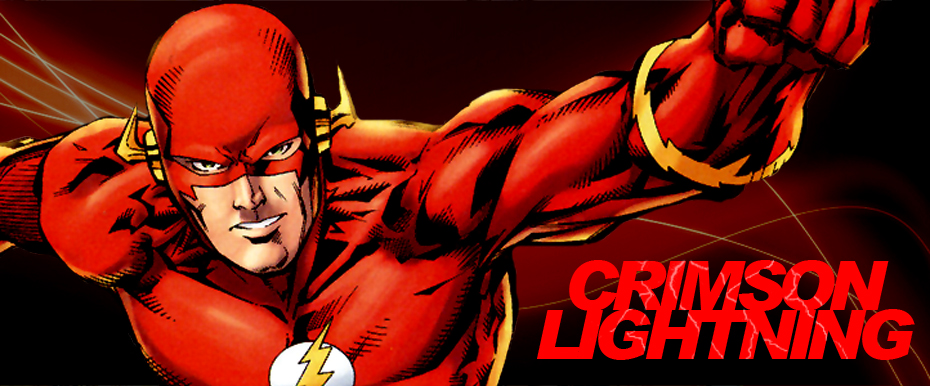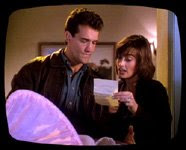With
Crimson Lightning’s regular reviews of
The Flash television series at an end, I’ve decided to take some time to look back over the show’s surprisingly varied twenty-two episode run. CBS’s
The Flash, developed by Danny Bilson and Paul DeMeo, was an admirably inventive series that proved itself capable of employing a wide variety of storytelling techniques borrowed from a number of distinctive genres. Barry Allen’s adventures in the crime-ridden streets and alleyways of Central City often coupled the requisite superheroics with familiar formulaic elements borrowed from police procedurals, detective stories, romantic comedies, urban thrillers, horror stories, or science fiction tales. Some of these adventurous outings, of course, proved to be better than others.
Our last installment of
Live Action featured a veritable rogues gallery of failures, listing four of the series’ worst episodes. It’s good to have that unpleasantness behind us. This week we’ll look at the top three episodes, as well as one honorable mention. If it takes some time to consider which of those stories from the live action television series deserve to be classified as the worst, the best of the series can be identified in an instant. When I pause to recall or reconsider
The Flash, I am immediately reminded of those thrilling installments that served to define the series and have ensured its unique place in television history. Indeed, memories of these stand-out stories still linger from their original broadcasts nearly twenty years ago. They have left an indelible impression.
Here, then, are the scarlet speedster’s greatest triumphs on television…
THE BEST 1. “Ghost in the Machine”
1. “Ghost in the Machine” brilliantly combines an outright celebration of the superhero genre with a variety of mischievous and mesmerizing thematic explorations. Actor Anthony Starke’s performance as the Ghost, an anachronistic supervillain obsessed with television, allows
The Flash to interrogate the very medium in which it is presented. Similarly, Jason Bernard’s performance as Nightshade, a retired costumed defender, revitalizes the Flash as hero and protagonist and invokes a sense of history and enduring legacy that had heretofore been lacking. The end result is the television series’ best episode, a stunningly inventive and irresistibly intriguing adventure that boldly pushed the possibilities of the show’s formula and format.
 2. “Watching the Detectives,”
2. “Watching the Detectives,” one of the show’s early successes, beautifully integrates action, drama, and comedy elements. It set a standard of quality for all those episodes that would follow. Barry Allen’s efforts to overcome the manipulating machinations of corrupt District Attorney Thomas Castillo are undeniably exciting and leave us with lingering concerns relating to morality and justice; the action and intrigue are tightly scripted and there is an enticing
film noir atmosphere about the proceedings. Additionally, this story introduces viewers to Joyce Hyser as sassy P.I. Megan Lockhart, who remains one of the series’ most memorable recurring characters.
 3. “The Trickster”
3. “The Trickster” is unrepentant wild fun. In clear defiance of frequent and often misguided attempts to render
The Flash more realistic or more grown-up, this installment rebelliously forces the live action television series to acknowledge its comic book roots and effectively redefined the show for the second half of its single season run. Of course, the episode earns a slot amongst the best of the series for its unforgettable depiction of the title supervillain alone. The Trickster, an electrifying character brought vividly to life by the incomparable Mark Hamill, stands as the one Rogue the live action television series reinterpreted to brilliant effect.
 Honorable Mention: “Double Vision”
Honorable Mention: “Double Vision” is packed with a surprising plenitude of engaging and unexpected elements that allow it to stand out amongst other installments of the series. Against the colorful backdrop of an annual Day of the Dead festival celebrated in Central City’s Spanish Hill, a cast of captivating characters becomes entangled in a complex and compelling plot that is both tightly scripted and beautifully realized on screen. The episode’s art direction, score, and cinematography are simply exceptional. This unique story juxtaposes or mixes a number of seemingly disparate ingredients--such as the religious beliefs of Santeria and the threat of cybernetic technology--and capitalizes on the surprising themes and effects that result.
Truly, the fastest man alive had some outstanding adventures on television, and it’s difficult to choose only a single honorable mention. (In particular, I agonized over not recognizing
“Good Night, Central City.” It very nearly earned the honorable mention.) Be sure to use the comment facility below to share your own thoughts and opinions regarding the series. Does this listing evoke any fond memories of the crimson comet’s televised exploits? What’s your favorite episode of
The Flash?


























